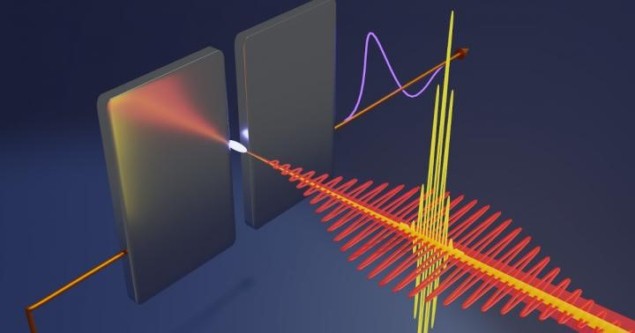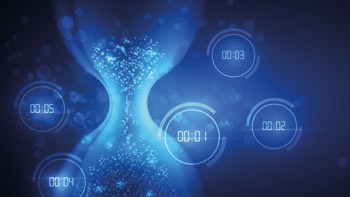
A new “femtosecond streaking” technique has been used to directly measure oscillations in the electric fields of visible and infrared light. Developed by researchers in Canada and Germany, led by Aleksey Korobenko at the University of Ottawa, the method is a cheaper, faster and more practical version of the established technique of attosecond streaking. Through further improvements, the new technique could find use in high-speed electronics and studies of plasma dynamics.
By determining the characteristics of coherent light fields, researchers can learn much about how light interacts with matter, and how it can be better manipulated on the shortest timescales. For visual and infrared frequencies, this can be done by visualizing how light’s electric field evolves over time using attosecond streaking.
This involves using an attosecond pulse of extreme-ultraviolet light to ionize a gas target. The electrons released in this process are then accelerated by the electric field of the light wave being sampled. Since the electric field of the light wave varies over time, it accelerates the electrons to a range of different velocities, producing a “streak” in their overall velocity distribution.
Complex and expensive
By measuring this pattern in real time, researchers can reconstruct the light wave’s electric field, and study its evolution. While this technique offers advantages, it cannot be done routinely in many labs because it requires a complex high-vacuum set-up as well as an expensive electron time-of-flight spectrometer.
Korobenko and team have created a new technique they call femtosecond streaking, which makes direct measurements of optical and infrared electric fields in ambient air. First, the air is ionized using a femtosecond laser pulse to create the desired electrons. These electrons are then steered by the light wave being sampled, producing transient, directional currents in the plasma.

Ultrafast phase measurements could boost optical computing
Finally, these currents are probed and amplified using a pair of metal electrodes, allowing the researchers to determine the streaking pattern induced by the wave. For the first time, this approach allowed for real-time oscillation measurements of visible and infrared electric fields using a simple and inexpensive apparatus.
Korobenko’s team believes that the capabilities of femtosecond streaking could soon reach far beyond the characterization of electric fields. The group now hopes that improvements to the stability of the set-up could lead to new applications in petahertz electronics – which operate a million times faster than modern processors. For experimental physicists, the technique could support advanced new studies of how plasmas evolve on ultrashort timescales.
Femtosecond streaking is described in Optica.



